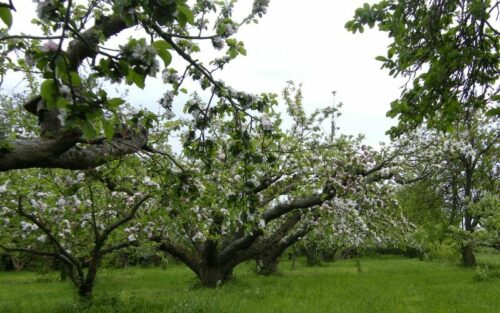The best time to prune a peach tree is during the dormant season, which is typically in late winter or early spring before new growth begins. Pruning during this time helps to stimulate the growth of new fruiting wood and encourages the development of a strong, healthy tree.
It is important to avoid pruning during the fall or early winter, as this can leave the tree vulnerable to cold damage and disease. Pruning during the growing season should also be avoided, as this can cause the tree to produce excess foliage at the expense of fruit production.
When pruning a peach tree, it is important to remove any dead or diseased wood, as well as any branches that are crossing or rubbing against each other. Thin out any branches that are too crowded, and remove any suckers that are growing from the base of the tree.
It is also important to avoid over-pruning, as this can reduce the tree’s ability to produce fruit. A good rule of thumb is to remove no more than one-third of the tree’s canopy in a single pruning session.
It is a good idea to have a plan in mind before starting to prune the tree. Assess the tree’s shape and overall health, and identify which branches need to be removed or trimmed. A common pruning technique for peach trees is called open-center pruning, which involves removing the central leader and encouraging the growth of lateral branches.
After pruning, it is important to properly dispose of any debris and sanitize your pruning tools to prevent the spread of disease. Applying a dormant spray, which is a mixture of horticultural oil and fungicide, can also help protect the tree from pests and disease.
In summary, the best time to prune a peach tree is during the dormant season in late winter or early spring. Proper pruning techniques can help promote the tree’s health and productivity, but it is important to avoid over-pruning and to take steps to prevent the spread of disease.
It is also important to water the tree regularly, especially during periods of drought or extreme heat. Peach trees require consistent moisture to produce juicy and flavorful fruit. Be sure to water deeply, but avoid overwatering, as this can lead to root rot and other issues.
Pest and disease management is another important aspect of caring for a peach tree. Common pests that can affect peach trees include aphids, mites, and peach tree borers. Regular monitoring and the use of organic pest control methods, such as neem oil or insecticidal soap, can help keep these pests under control.
Diseases that can affect peach trees include peach leaf curl, bacterial spots, and brown rot. Proper pruning, sanitation, and the use of fungicides can help prevent and manage these diseases.
By following these steps and taking proper care of your peach tree, you can enjoy a bountiful harvest of sweet and juicy peaches each year.
Harvesting peaches at the right time is also important for getting the best flavor and texture. The best time to harvest peaches is when they are fully ripe and the flesh gives slightly when gently pressed. You can also look for a slight blush on the skin and a sweet aroma.
Peaches are delicate fruits that bruise easily, so it is important to handle them gently when picking and transporting them. Avoid picking them too early or too late, as this can affect their flavor and texture.
Once harvested, peaches can be stored at room temperature until they are ripe, then refrigerated to extend their shelf life. They can also be frozen or canned for later use.
In conclusion, taking care of a peach tree involves proper pruning, fertilization, watering, pest, and disease management, and harvesting at the right time. With the right care, your peach tree can produce delicious and healthy fruit for years to come.

